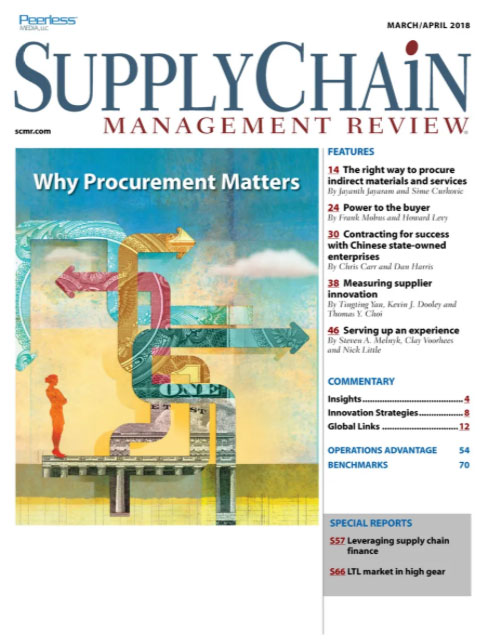Sorry, but your login has failed. Please recheck your login information and resubmit. If your subscription has expired, renew here.
March-April 2018
"Inflation creeps into U.S. Supply Chain.” So said the headline on a Wall Street Journal article I read this morning before writing this column. The Journal went on to write that U.S. companies are grappling with rising material and ingredient costs on top of pressure from higher wages—a potential double whammy— and noted that companies like Whirlpool and Ford have already issued warnings to the market. Browse this issue archive.Need Help? Contact customer service 847-559-7581 More options
After nearly a decade of so-so profits, the $36 billion less-than-truckload (LTL) sector of the trucking industry is poised for impressive—if not spectacular—growth in 2018.
Nearly all trucking analysts agree that consistently steady industrial and retail demand, the tightening of overall trucking capacity throughout the industry, and LTL’s special operational niche all are factors in creating sparkling market conditions unseen in that sector in at least 10 years.
As Stifel Inc. analyst David Ross recently summed it up to the investor community: “Structurally, LTL still is set up really well for success.”
For example, unlike truckload (TL), there are few new entrants in LTL because of the steep initial economic outlay to replicate most carriers’ complex hub-and-spoke, brick-and-mortar terminal networks. At the same time, shortening supply chains, more emphasis on smaller and lighter loads, tighter capacity throughout the entire trucking industry as well as the e-commerce boom all point to more business for LTL carriers.

This complete article is available to subscribers only.
Log in now for full access or start your PLUS+ subscription for instant access.
SC
MR
Sorry, but your login has failed. Please recheck your login information and resubmit. If your subscription has expired, renew here.
March-April 2018
"Inflation creeps into U.S. Supply Chain.” So said the headline on a Wall Street Journal article I read this morning before writing this column. The Journal went on to write that U.S. companies are grappling… Browse this issue archive. Access your online digital edition. Download a PDF file of the March-April 2018 issue.After nearly a decade of so-so profits, the $36 billion less-than-truckload (LTL) sector of the trucking industry is poised for impressive—if not spectacular—growth in 2018.
Nearly all trucking analysts agree that consistently steady industrial and retail demand, the tightening of overall trucking capacity throughout the industry, and LTL's special operational niche all are factors in creating sparkling market conditions unseen in that sector in at least 10 years.
As Stifel Inc. analyst David Ross recently summed it up to the investor community: “Structurally, LTL still is set up really well for success.”
For example, unlike truckload (TL), there are few new entrants in LTL because of the steep initial economic outlay to replicate most carriers' complex hub-and-spoke, brick-and-mortar terminal networks. At the same time, shortening supply chains, more emphasis on smaller and lighter loads, tighter capacity throughout the entire trucking industry as well as the e-commerce boom all point to more business for LTL carriers.
SC
MR


More 3PL
- Orchestration: The Future of Supply Chain
- February and year-to-date U.S. import volume is solid, reports S&P Global Market Intelligence
- 2024 retail sales forecast calls for growth, says National Retail Federation
- ISM reports another month of services sector growth in February
- February manufacturing output declines, notes ISM
- How to Create Real Retailer-Brand Loyalty
- More 3PL
Latest Podcast

 Explore
Explore
Business Management News
- How CPG brands can deliver on supplier diversity promises
- How S&OP provides the answer to in-demand products
- AI, virtual reality is bringing experiential learning into the modern age
- Tips for CIOs to overcome technology talent acquisition troubles
- There is still work to do to achieve supply chain stability
- Blooming success: The vital role of S&OE in nurturing global supply chains
- More Business Management
Latest Business Management Resources

Subscribe

Supply Chain Management Review delivers the best industry content.

Editors’ Picks






